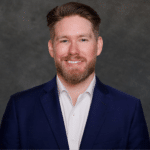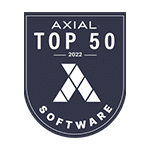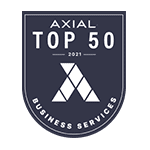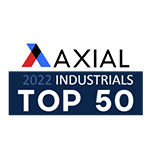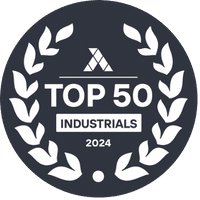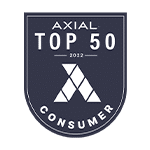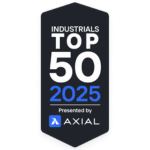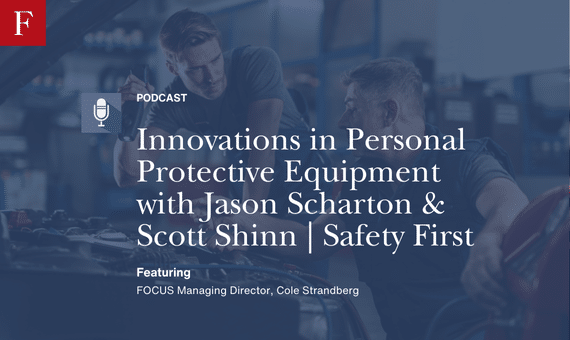
Safety First: Prioritizing Health in the Workshop Series
I think that’s kind of the challenge is, is to really have the shop management on board that safety train every day as, as people come in and to the, to the shop, new employees replacing other employees, you know, they’ve got to be indoctrinated into a culture of safety within the shop. And, and if it’s just the once a year, we say, hey, here’s all the PPE and you guys sign this agreement that you’ll wear it. That isn’t a culture of safety.
Listen to this Collision Vision episode here as we discuss creating a culture of safety first.
Cole Strandberg: We’re continuing our safety First prioritizing health in the Workshop series with an essential discussion on personal protective equipment, otherwise known as PPE, and how innovation is shaping workplace safety in collision repair. Joining us today are two industry leaders from Three M, Scott Shin, Advanced Technical Service Specialist in the Personal Safety Division at Three M, and Jason Charton, Global Industry Relations Leader for the collision repair industry at Three M. Scott and Jason bring a wealth of knowledge about the latest advancements in PPE, how 3 M is addressing the unique safety challenges in our industry, and what shops can do to keep their teams safe and productive.
Jason Scharton: Thanks Cole. Happy to be here.
Cole Strandberg: Looking forward to an awesome conversation and we get 2 for one today. Rather than actually diving straight into the questions, go ahead and real quick starting with Jason. Would you introduce yourself and your position?
Jason Scharton: Sure. My name is Jason Charton. I am part of three Ms. Automotive aftermarket division or three M collision. I’m our global industry relations leader, which means I get the opportunity to go out and, and speak to our customers around the globe, attend all sorts of events and trade shows representing 3 M and and really trying to connect three M to the industry and and the industry to three M.
Scott Shin: Good. And I am.
Cole Strandberg: Scott, How are you, Scott?
Scott Shin: Sorry about that. Cole jumped out there. Yeah, Scott Shin is is my name. I am a Application Engineering specialist with three M Personal Safety division. So my role is to work with our customers on the proper selection and use of our PPE equipment. Put simply.
Cole Strandberg: Fantastic. So guys, we have a lot to talk about then today and and Jason, I’m going to throw the first question your way and that is at a high level, why is PPE such a critical aspect of workplace safety, especially in collision repair?
Jason Scharton: Well, we want to protect our people, right, You know, and people are really our biggest asset in in any industry, but certainly in, in collision repair. And we want them working for us for a long time. We want them to be safe and healthy as they work. And, and you know, we want to make it a a pleasant working environment wherever possible. You know, Scott can talk about, you know, that the hierarchy of, of control when it comes to safety, obviously we would prefer that the the dangerous condition, if you will not be there at all, or we take several other steps to, to prevent that that dangerous situation from ever evolving or coming into contact with the employee. But at the end of the day, there’s a lot of things that are potentially random and in an environment like a collision repair shop where every repair is different, that, you know, safety kind of goes down to the personal protective equipment level, you know, kind of that last line of defense to make sure we’re protecting our people.
Cole Strandberg: Well put. And it’s crazy. You guys have both been in and around the industry for a long time. The horror stories we hear from the lack of PPE in the past. I remember my dad talking about, you know, smoking cigarettes in the paint booth and then some crazy stuff. So we’ve come a very long way and I do want to talk about that a little bit. But first, I want to continue to set the stage a little bit. So Scott, I’m I’m going to bring it over to you. What are some of the most common hazards technicians face and what kind of PPE can we use? And how does PPE help mitigate mitigate rather these risks?
Scott Shin: Yeah. So depending on the application, there are a lot of different types of hazards that technicians are at risk. Probably start with the most common. I think it’s probably respiratory hazards. So you know, welding produces welding fume, right? That’s can be dangerous if inhaled. When you’re painting, you’ve got organic vapors from the painting systems as well as dust and mist in the overspray. You’ve got eye hazards from grinding and sanding, particulate hazards from from sanding body filler, sanding paint solvents from adhesive use. And that’s just the few that I’m that I’m aware of. I’m sure there’s many, many more. So it’s critical that you know that the shop goes through and identifies these hazards, goes through the selection process to pick the PPE that’s going to be right for not only the hazard, but for the worker, right? Because if it doesn’t fit the worker, they tend not to wear it when they need to wear it. And that’s where injuries can occur. So that the process is is definitely critical.
Cole Strandberg: A lot to think about and, and you know, we talked about what PPE and safety within the shop environment looked like in the past. Jason, how have you seen awareness of the importance of PPE evolve over over the last few years, we’ll call it? And how do you think that’s going to continue to evolve?
Jason Scharton: Well, like I said, I’ve been, I’ve been in the shops here for shoot over 20 years and, and I’ve seen a, a dramatic change in, in attitude, in, in personal protective equipment and, and the people working in the shops. You know, it used to be, you know, if I walked into a shop and I was wearing safety glasses, I was probably the only one. Now safety glasses are almost universal. Everybody’s wearing them. I see, you know, lots and lots and lots of people, you know, standing on panels with, with respirators. It’s, it’s just, you see cut proof clubs, you see ear protection in use. It, it just has has become much more accepted, much more normal that to have these things in play rather than, you know, maybe the, the tough guy image of, of 15 to 20 years ago where, you know, I don’t need that stuff. You know, I, I’ve already missing 3 fingers and you know, I, I’ve got 1 clipped off myself, you know, and, and that was, those are badges of honor. Now people are really taking care of themselves. And, and I see that trend continuing and continuing. Obviously we’ve got a, a technician shortage in the industry around the globe, in the US especially. And as these technicians are, are growing older, they’re wanting to take care of better care of themselves. And the newer technicians coming in are starting off with those habits already in place. So we’re just going to see more and more acceptance of PPE and, and it’s just going to continue being there every day and, and it’s going to be unusual to see anybody, you know, forget or, or not have anything on during the course of the day.
Cole Strandberg: It’s great to hear and and it seems like that might be from a really zoomed out perspective, it seems like people are just more health conscious and safety conscious. I don’t you guys are in Minnesota right now. Maybe you’re skiers like I am snow skiers. And I think of you know, you, you’re on a mountain. 10 years ago, no one was wearing a helmet. Now everyone’s wearing a helmet. It’s similar in a shop environment as well. More and more people are realizing, hey, if I do these few basic things to keep myself safe.
Cole Strandberg: This is legitimately, you know, a healthier lifestyle, more years potentially on your life down the road, really important stuff. Now looking at your background, you guys are at HQ AT3M in Minnesota, known, you know frankly is one of the most innovative companies out there, certainly one of the most innovative companies with a hand in the collision repair industry. Scott, what are some of the latest advancements in PPE that are applicable to collision repair shops that you are excited about?
Scott Shin: Yeah, there’s quite a few at Three M We don’t necessarily design PPE for a specific industry or application. We, we try to design PPE that’s going to be effective across the wide range of of applications and industries. But certainly we are always looking at improving how PPE functions so it’s easier for the users to Don to where to use, it’s more comfortable, it’s more protective. There’s a few things that come to mind that that do have an impact in the in the collision repair industry. One being the design of an intrinsically safe powered air purifying respirator. This can be used in potentially explosive environments like the like the paint booth without, you know, risking any spark or explosion. So that’s kind of one example that’s that can be used in the collision repair industry. We recently developed a new welding helmet with the first of its kind curved auto darkening filter technology. So we’ve got a great field of view helps the welder see better what he’s doing, especially in tight spaces. So those are two examples of of different technology that that’s fairly recent. I’m sure there’s more if I had time to think about it.
Jason Scharton: But I think, you know, one of those there’s, there’s really small things too, though, Scott, right. I mean, I, you know, safety glasses have been around for a long time and, and three M has kind of taken the science of, of biometrics and modeling to really look at how do safety glasses fit on somebody’s head. And, and they’ve come out with a, a whole series now of safety glasses that have these, these built in flexible hinges. I don’t even know what you guys call them, but now it’s, it’s almost one-size-fits-all. And, and they’re very comfortable, no matter whether you’ve got a very small head, very large head, they just kind of flex and, and work. And, and again, as part of making it comfortable, no matter who you are, that you can put on the pair of safety glasses and it’s not rubbing and, and irritating your head all day. So little things like that. And in, in the use to, you know, brand new pieces of equipment.
Scott Shin: Yeah. So we, so we have a process we call science of fit, right. So we look at different populations, you look at the people wearing our PPE, how we can make them more comfortable, fit a wide wider range of people because the workforce is becoming much more diverse than had in the past. So as Jason mentioned, we’ve got a safety glass with with temple pressure diffusion technology. So it’s much more comfortable, much more secure. It’s a much wider range of faces. So it’s kind of a one one example again of different technology for PPE.
Cole Strandberg: Love that. And this is stuff that you might not think about, but these little hindrances, the little excuses for technicians not to utilize these PPE components leads to a challenge in adoption and actually being used on the shop floor. And I think adoption is every bit as important as providing the the equipment or more to your team. And So what challenges and Jason, I’ll, I’ll, I’ll send this your way to start. Do shops face when implementing PPE and getting their employees to adopt the the equipment they’re providing?
Jason Scharton: I think it, you know, it, it really starts with the, the plan upfront, right and, and doing as a shop, doing the, the correct detailed assessment of the hazards as as Scott talked about and, and then how we can address those hazards. So, you know, certainly OSHA and and other regulatory bodies come into this and, and want to make sure that you’ve got the right documentation, you’ve got the right plan, you’ve selected the, the equipment that is appropriate for the hazard. But then, you know, as an employer, you need to make that available. But I, I think one thing that sometimes shops forget to do is is engage the workforce, you know, the team in actually documenting what those hazards are and, and getting their buy in to this is how we’re going to address it so that they can, you know, it, it, it, it, in my opinion, yes, the shop, their, their requirement is really to make that DPE available. But you know, from the standpoint of, of really doing their job, you know, shops need to engage the workforce to knowing why it’s available and encouraging them to use it and in more than just kind of a passing phase. So I, I think that’s kind of the challenge is, is to really have the shop management on board that safety train every day as, as people come in and to the, to the shop, new employees replacing other employees, you know, they’ve got to be indoctrinated into a culture of safety within the shop. And, and if it’s just the once a year, we say, hey, here’s all the PPE and you guys sign this agreement that you’ll wear it. That isn’t a culture of safety. It needs to be everyday that we’re talking about it, we’re observing it. And, and that takes effort. It takes an extra step as a management team to to kind of make sure everybody is is not only being safe, but understand why it’s important to be safe.
Scott Shin: Exactly, Education and awareness is definitely key in the process. Understanding why it’s important, understanding the hazards. And one of the I’ll add on if, if, if the workers are involved in the selection process, it greatly increases the likelihood of of adoption. Let them select product that’s going to work for them, comfortable, doesn’t interfere with the work they’re trying to accomplish. They’ll be much more likely to adopt that PP and use it when it needs to be used.
Cole Strandberg: Two different directions I want to go here from what you guys just said. I think the first of which is, and this is really for Scott, how do you see technicians out there kind of making mistakes with their PPE? What are some common mistakes that kind of decrease the effectiveness that are easy to change, and how can they be avoided?
Scott Shin: Well, I, I think not wearing the PPE when they need to wear it. And there’s, there’s lots of reasons why somebody would remove a respirator, safety glasses, face shield. The biggest thing we see is comfort. Obviously, if it’s not comfortable, right, if it starts to ’cause you know, fatigue, pain, sometimes they tend to remove it. So adjust it where it’s maybe more comfortable, but not as effective. That’s one reason communication is, is is huge, right, Especially when using respiratory protection. If it can be hard to communicate with Co workers. So a lot of times what we’ll see is is workers, you know, remove the facepiece or lift that respirator so they can communicate. So I think that’s those are a couple reasons why or mistakes they would make making PPE less effective. I think it’s, it’s, it’s on the the shop owners again to to watch out for this type of behavior. Get out of the shop floor, see what’s see what’s being done out there, investigates if injuries are happening, why they’re happening and if if you know, reinforce the need to wear PPE 100% of the time when it’s required to be worn. It’s not worn. It’s not effective.
Cole Strandberg: You guys keep making too many good points because now I have a whole different angle I want to approach here too. So bear with me here. But a follow up on that. Are there any kind of situations within the shock that as a bystander you’d say, man, those guys should really be using this PPE, where as a technician we might not even realize this is a potentially hazardous situation for me?
Jason Scharton: You know, the, the, the first thing that, that that comes to mind, you know, for me is, is as simple as, as cut proof gloves, right? I mean, the first thing you know, there is, well, we’re handling sheet metal parts in the body department a lot. And, and some of those have, have sharp edges. And yeah, it’s, it’s easy to kind of get cut, but even, you know, the, the side of an abrasive disc on a, on a dual action Sander can, can slice open a finger pretty easily. And so having that, that cut proof glove when you’re handling, you know, DAS or handling sheet metal parts or anything is, is something that I, I think is, is still coming from an acceptance standpoint that people don’t recognize that as much as they do. Certainly the respiratory protection and maybe the eye protection. So yeah, that’s, that’s kind of the, the first one that I, I see. It’s just not well noticed and done, but it’s it’s so easy to do and and we don’t even think about it most of the time.
Scott Shin: Yeah, it’s something I’ll add is we see may not not this industry inclusive, but in all industries, right. If you’re not workers that are not performing that activity still may need to wear PPE, right. So the technician is is is sanding a body filler have safety glasses on a respirator, but the worker in the.
Jason Scharton: Next stall.
Scott Shin: In the next stall or next to them not wearing PPE, well that, that dust does travel and there’s still risk of exposure. So you need to evaluate not only the work being done, but the the others in the shop that are working next to are adjacent to that work. And we see that a lot with with in the case of welding, right? If someone’s welding and they’re not using the curtain, bystanders walk by and they get they get flashed, right, they can.
Cole Strandberg: You know, get I was just going to say, yeah, who among us has not accidentally made eye contact with an arc from across the room? It’s not a fun experience, no fun. All right, well, fantastic. I’m going to get us back on track here a little bit. I appreciate you bearing with me on some, some turns here from a three M perspective and ensuring things are being used appropriately and assisting shops with the training and, and kind of the education on PPE. I’m sure a lot of our listeners here 3 Amazon and they immediately think of their local Rep or their regional Rep. Shout out to to Jay and Lewis from my, my South Florida territory, right? What does 3 M do to help educate folks, specifically management and owners, on how to ensure their people have the right things and the right use cases for things?
Jason Scharton: Well, you know, our, again, you talk about our folks out in the field, the local representatives, they get a ton of training as they start with our division before they go out into the shop. Most of our, our local representatives came from the shops. They’re very aware of the environment and the processes, but we try to go to the extra mile with some of these other things so that, you know, while they’re not necessarily experts in say, personal protective equipment, they know a lot more than just about anybody besides Scott and, and his cadre at the company. And so they’re out there to act as, as a resource and, and be a consultant to the shops for any of this, certainly on, on the availability of, of new product and, and how to Don the PPE and, and, and, and what’s available, you know, from there, they can, you know, connect with a lot of online resources that, that we make available. Scott and his division have just a ton of, of training material online on, on how to use and abuse and, and not abuse, how to select all the PPE that, that we have and they lay it out very well. There’s also some different resources that they have, you know, specifically around selection and services that we have to help lay out the process of going through that, that hazard assessment and, and what’s available, you know, some online tools there. So there’s, there’s a lot of things that three M makes available through our our website and, and that all kind of channels to the industry through our local sales reps and, and and of course any touch point that that they would have with us digitally.
Cole Strandberg: Talk to me about that hazard assessment. A lot of our listeners or business owners or managers within the shop and they might be thinking, I don’t really know what I don’t know when it comes to hazards and PPE. What does that consist of and can you kind of walk us through that at a high level?
Scott Shin: Yeah, I, I can address that and I, I hate to throw out the four letter word OSHA, right? But OSHA certainly out there they’re, they’re, they’re looking for these types of things. That might be the first thing they asked when they, when they enter a shop is let me see your hazard assessment. So they do requirement that they do require that to the shop owners or representatives walk through the shop, identify which hazards are present or may be present and you document that process. And if there’s a need for PPE, you need to certify, right, that the process has been cleaned completed and kind of an overview of, of how you selected that PPE. So that’s kind of more than one, one more common deficiencies we see across all industry right now. The assessment when you get into like respiratory protection, that might include some air monitoring, right? So you can see visually there’s dust in the air, but you really don’t know how much, right? So you typically can either do that in house or hire a consultant to do some air monitoring, determine how much is in the air. And that can be used to help select the right level of respiratory protection. Because there’s, there’s a lot of options out there. Some are more protective than others. And it’s important to get the right, the right type and the right style. But you don’t want to over protect. You don’t want to under protect. You want to find something that’s comfortable, that’ll be worn. So that’s all part of that hazard assessment process. You can, that’s the that’s a critical first step. Now let’s add Jason mentioned the hierarchy of control earlier, right? So another common mistake we see across all industries is they’ll jump right into personal protective equipment in reality, right? That should be the last resort. There’s other controls that are more effective, engineering controls, local exhaust ventilation, maybe substituting a less hazardous chemical for a more hazardous chemical and that sort of thing. So those should be investigated, implemented when feasible. And then and only then should you be looking at personal protective equipment, which that said is still a very critical part of the overall safety program.
Jason Scharton: Now there, there are a number of, of different consultants as as Scott mentioned that that do this certainly in the collision repair industry that all do a great job. They’ve got a model for exactly what they should be looking for in a collision repair environment. And, and can really help the shop get organized and, and address all these things in a very systematic way and help them put in those control plans for keeping it up to date and, and making sure that they’ve got everything in place.
Cole Strandberg: Fantastic. Now that’s great stuff. And Scott, I’m going to one up your 4 letter word with an even longer potentially nastier word and that is liability. And from a a layman’s perspective, whether it’s PPE or, or somewhere further up the line in that hierarchy, what is required generally of shops to make sure that that their people are safe versus what can be on the people, on their employees for their own discretion on what they’re using and what they’re not.
Scott Shin: That’s kind of a loaded question. So obviously the, the, the shop owners are liable for everything that happens in their shop, right? So when it comes to PPE, right, they’re liable. So regardless of whether the worker is following their program, not following the program, wearing PPE, not wearing PPE, there’s some extent to liability there if something does happen. So again, it comes down to education comes down to awareness, understanding when PPE is, is needed and what type of PPE is needed. Reinforcement, right? If if you’re walking a shop floor, you, you, you observe bad behavior, you need to correct that, right? We don’t, we don’t necessarily promote penalizing people. We think, you know, positive reinforcement is much more effective, right? So instruct them on the proper way to do things. And then next time you see them doing it properly, right, give them the kudos, give them some type of reward. So there’s no getting away from liability. That’s that’s part of the part of the being a business owner. But there’s a lot of steps you can take to minimize that liability for sure.
Cole Strandberg: Well put. And I didn’t mean to hit you with a loaded question, but I want to drive home the fact that, hey, my guys just won’t use the stuff I bought them is not an OK excuse for dangerous things happening in the workplace. And I think that’s important enough to reiterate. And I do appreciate that. On the positive side, and I think it was Jason who mentioned it earlier. If if it was you, Scott, I apologize, but the word technician shortage, I sort of laugh about this because whatever the original topic of conversation is in 99% of cases here on the collision vision, the technician shortage comes up from my perspective. And I’ll throw this out to you guys for general commentary, but PPE and a safe place to work is sort of table stakes like that is the bare minimum of what can be expected for new or existing people in the workplace. Thoughts on kind of how you’ve seen that play into the technician shortage, hiring and retention component of the labor force?
Jason Scharton: No, absolutely. I, it’s again, people are looking for the differentiator. They, they want to work in a typically work in an environment where it’s, it’s brightly lit, you know, it’s not dirty, it’s, it’s a comfortable temperature. And, and all of these things come together and, and they want to see that their employer is, is taking care of them. And, and the PPE that’s made available and, and is there for the, the workers to use. Is, is one of those key things that they start to look at not only the, the type and, and variety, but at at some point the, the brand and the quality of, of that, the reputation of it. The DPE is, is a really, really, really small percentage of, of the overall spend of a, of a shop. We have some numbers and, and most people are, are actually exceeding what we would think is normal. So that’s great. And in the shops that we’re working with, but I’ve seen ads quite honestly and you know, online for, for shops advertising for technicians and, and they will include, you know, certain, you know, PPEPPE providers and, and, and equipment that the shop provides. You know the the, the paper unit that purified air, what is it? Purified air?
Scott Shin: Purifying respirator. There you go.
Jason Scharton: I just know the acronym paper, right, But you know they they advertise.
Cole Strandberg: Those and they ad for.
Jason Scharton: People for the painters. So it it, it’s becomes a very much an attractor.
Cole Strandberg: Yeah, I, I told you guys in the the before we hit record, my main exposure to Three M was on the dirt trap side and, and, and that component. But Papper of course is one that everyone knows and talks about, but there’s a ton there. And Scott, I want to go over to you real quick and back to the the concept of innovation within Three M and within PPE. We’ve seen some major shifts in the collision repair industry and one such major shift is the increasing popularity of EVs. Obviously that brings some real new safety concerns and discussions to be had. How is PPE and and beyond adapting to meet some of these new innovations and challenges in our industry?
Scott Shin: Yeah. I guess I mentioned earlier we don’t necessarily develop PPE for specific industries or applications, but certainly the the collision repair industry is changing. There is there are different risks when you are working on an electric vehicle. The battery technology is still we’ll say somewhat volatile, right. There’s, there’s certain issues with overheating fires. So the risks may be shock hazard now instead of maybe more traditional hazards, maybe fire hazard is is more of a risk. So we do have PPE to address some of that, right. So we are getting 3M is getting into the arc flash protection side of things with our face Shields and helmets. That’s nothing new to the, to the PPE industry. We’ve always had supplied air systems and firefighting supplied air systems, which hopefully will never have to be used in a collision repair shop. But, but, but those are there. So, so as the technology advances with automobiles and the technicians and the risk change, we try to be there to, to have solutions to address those risks. So maybe Jason might have a little more to add on the EV side, but yeah.
Cole Strandberg: Awesome. Makes total sense. Yeah, you guys are exposed to a ton of really cool and different industries and some pretty smart people present company included over there making sure we’re staying safe in all segments, which is awesome. I want to ask you both to break out the crystal ball real quick as well. And I know Three M has likely a ton of super secret fun projects we’re working on down the road. I don’t want to know about those here, but at a high level, any kind of innovations in PPE that you see coming down the road, whether that be tomorrow or 10 years from now, that are worth highlighting?
Jason Scharton: You know, it it, it Cole, it does come down to because when we look at personal safety at three M, we’re looking at, we’ve got one group who works on that for all industries around the world, whether it be, you know, medical or industrial or, or consumer. And so they’re looking at all the hazards that are out there and, and developing personal protective equipment to protect against that. So as new technologies come into one sector or industry, chances are that it’s probably already been in another sector or industry somewhere along the way. And, and you know, we’ll, we’ll have a solution. So that, that gives us a, a broadview to kind of be able to bring things relatively quickly to market if we have it. Otherwise, yeah, we’re, we’re forced to, to develop something from the beginning. But EV is, is certainly the issues there are, are new to the collision repair industry. They aren’t necessarily new to the world. High voltage, protecting ourselves from high voltage. I think you know, the fire, fire suppression, those sorts of things are happening in other industries and, and solutions exist. It’s just making sure that collision repair shops understand what those solutions are, where they they can get them and and what’s available.
Scott Shin: Yeah, there’s, so there’s, there’s different trends that we’re seeing than may or may not be part of, right. In the PPE industry. One of those is being I guess what we would call connected PPE solutions or the Internet of Things, right. So how can we connect our PPE or PPE for in general to the Internet to be maybe smarter, maybe able to make adjustments over an app on your phone or track certain things like wear time, productivity, fit, that sort of thing. So those are all trends that we’re starting to hear about. And, and, and see in some cases, we’re starting to see more on the wearable side of the things with, with sensor technology. Again, we’re not not necessarily playing in that yet, but there’s a big emphasis now at the federal and, and, and a lot of state levels with the with heat stress concerns. So one thing is, is how do we measure heat stress on an individual or warning signs before they actually have any adverse health effects. So sensor technology is something that people are starting to investigate where So those are couple, you know couple crystal ball kind of things which which might be coming in in the future.
Jason Scharton: You know, and and I think the the other thing that that we try to do and it’s not to put our our our friends over and personal safety out of business, but you know, we look at a lot of opportunities to try and and eliminate the hazard that that’s in place to begin with. So, you know, several years ago and it wasn’t new several years ago, but three M introduced dust extraction working with Festool into the collision repair market here in the US and, and other markets. And, and you know, that’s an example of what we call engineering controls, you know, to really capture that dust at the source before it has a chance to really get airborne and people can breathe into it. Depending on what else is going on in the shop, you still may need a respirator, but it, it changes the dynamics of how often you’d need to change that or what type you may need. And so with every opportunity we’re, we’re looking at what can we do to make an operation safer along with higher quality, more productive, more profitable, but safer is, is always a consideration if we can reduce the risk associated with it. That’s just exactly what we want to do.
Cole Strandberg: Awesome, guys. Well, you have both been so generous with your time and insightful and educational on PPE and safety within the workplace. And I want to be cognizant of your time. So I want to kind of leave us here with one final question to bring it all home and I’d ask it of each of you. I’ll start with Jason. If you’re a shop owner sitting here, you’re listening. What advice would you give to that shop owner about investing in PPE and the long term safety of their people?
Jason Scharton: I would say to be proud of that expense and it is an expense and I know, and everything is more expensive, but realistically, it, it’s such a minor percentage of, of what a shop owner spends, they could double the spending and it still wouldn’t be a, a blip on the radar of, of, on anybody’s book. So, you know, go the extra mile and, and get the, the PPE that your technicians find comfortable that they want to wear. Give them, you know, some sense of, of selection and choice as a group on, on what to bring in, because that’s going to help it move forward. And, and ultimately, that’s what’s going to shine through when people come to visit your shop, either as, as customers or as future, you know, employees to, to evaluate you, They’re going to see how comfortable, safe, healthy, happy everybody else is in the shop and, and going to want to be there because of it.
Scott Shin: And I guess I would say involving the workers in the safety process start to finish, right? So starting with the hazard assessment, right, nobody knows the hazards of the job better than the technician performing the job, right? So they can be a big help in that hazard assessment process. And then when it comes to selecting the PPE, as I mentioned earlier, get them involved in the process as well. Forcing a solution APPE on somebody may or may not work, right? But involve them in the process and your, your chance of success greatly increases, right? We want to keep workers healthy and happy and healthy and happy workers are typically more productive. So it’s a win, win.
Cole Strandberg: Well put. I love it. Anything safety related is a win win and I think you guys did a great job of bringing that home here today. Jason, I have a feeling this question goes to you given your role and title. But for people who want to learn more about what we talked about here today or get in touch, where can I do that?
Jason Scharton: Certainly on the on the web, you know if you go to 3mcollision.com that gets you into basically the the portal of of three M into the collision repair industry and and from there break out into certainly our personal protective equipment group and all those solutions there if we want to look at safety.
Cole Strandberg: Fantastic. I’ll be sure to include that in the show notes. Jason and Scott, really, really appreciate your time today, guys. It was an absolute pleasure and thank you for joining us on the Collision Vision.
That is all for today’s episode here on the Collision Vision. I hope you enjoyed our conversation with Scott and Jason from Three M on the critical role of personal protective equipment in the collision repair industry. If you’re looking to improve your safety practices in your shop, today’s episode was packed with actionable insights and valuable advice. If you found today’s discussion helpful, be sure to give The Collision Vision a follow wherever you enjoy your podcasts or on YouTube where The Collision Vision lives in video form. We would also love to hear from you. Feel free to leave us a review and share this episode with your network to help us spread the word about safety and beyond. On behalf of the Auto Body News team and myself, thank you for coming along for the ride.
Listen and Follow The Collision Vision.

